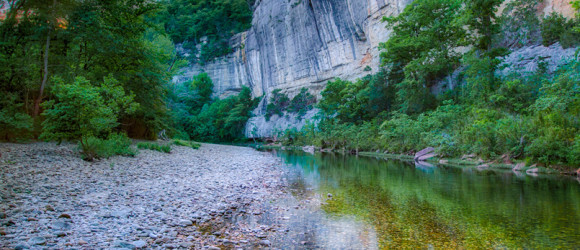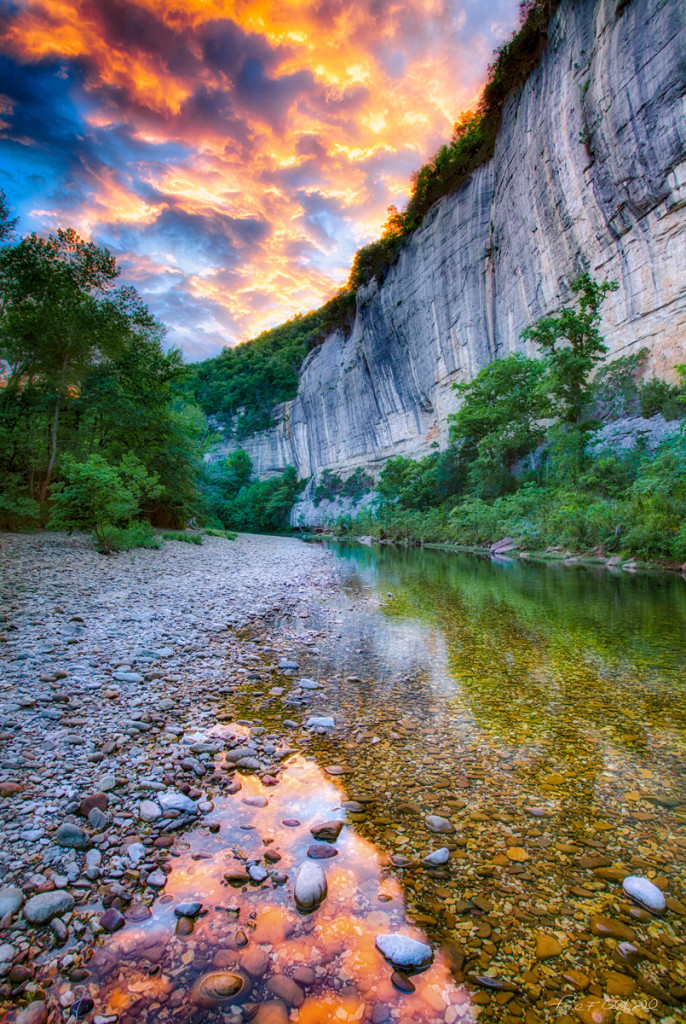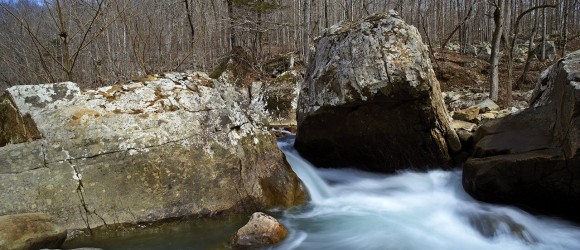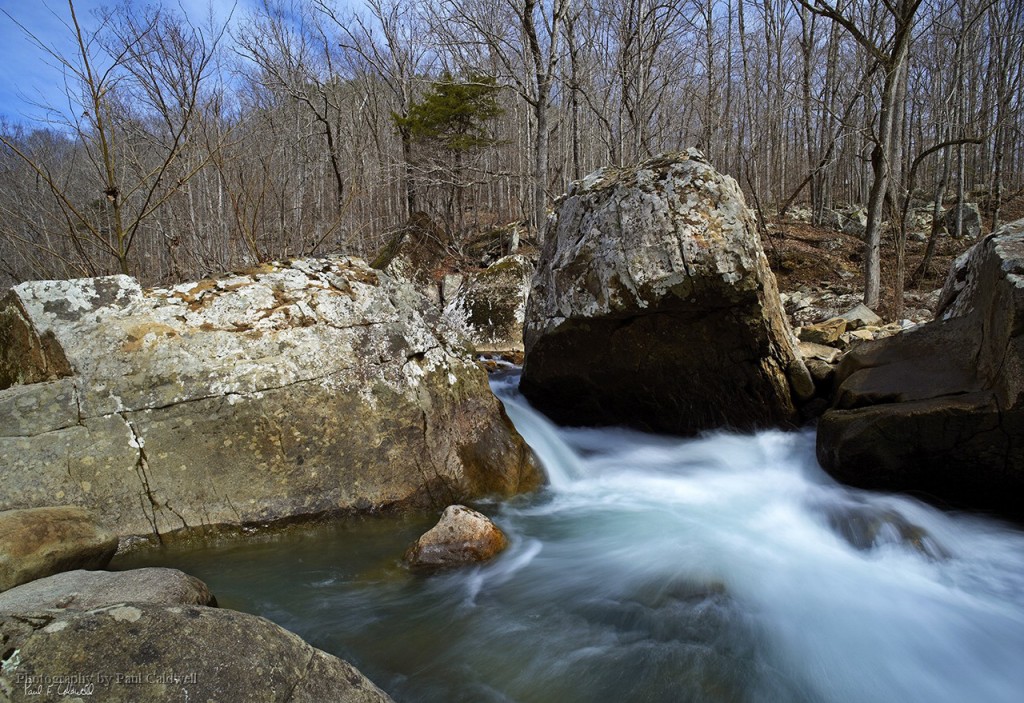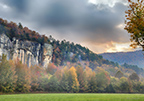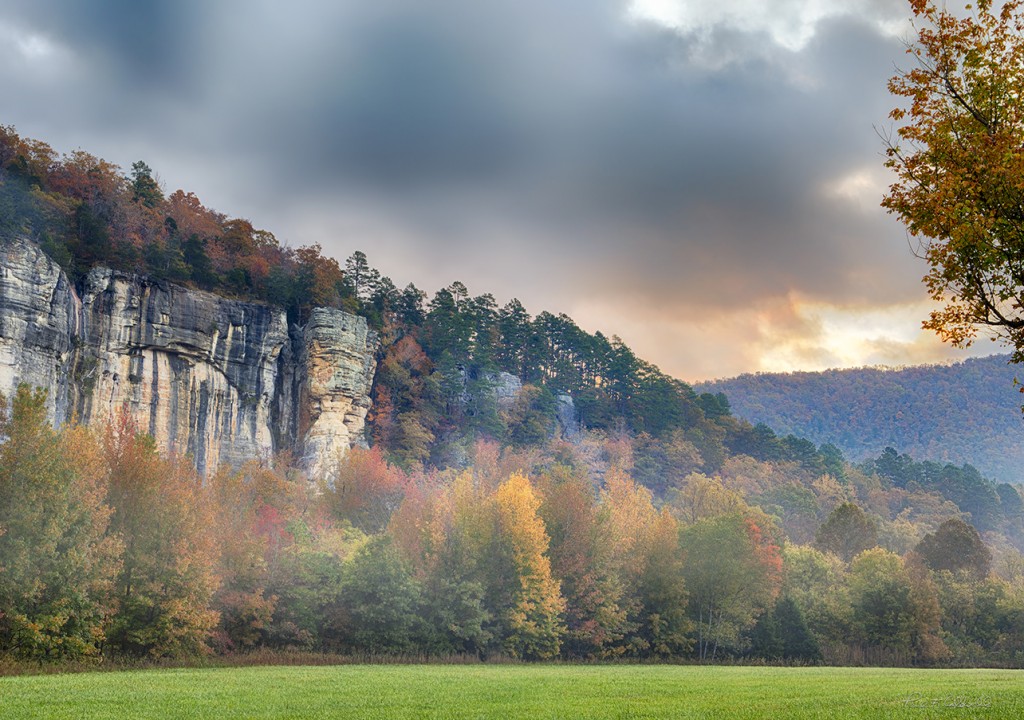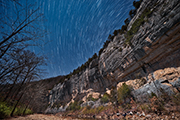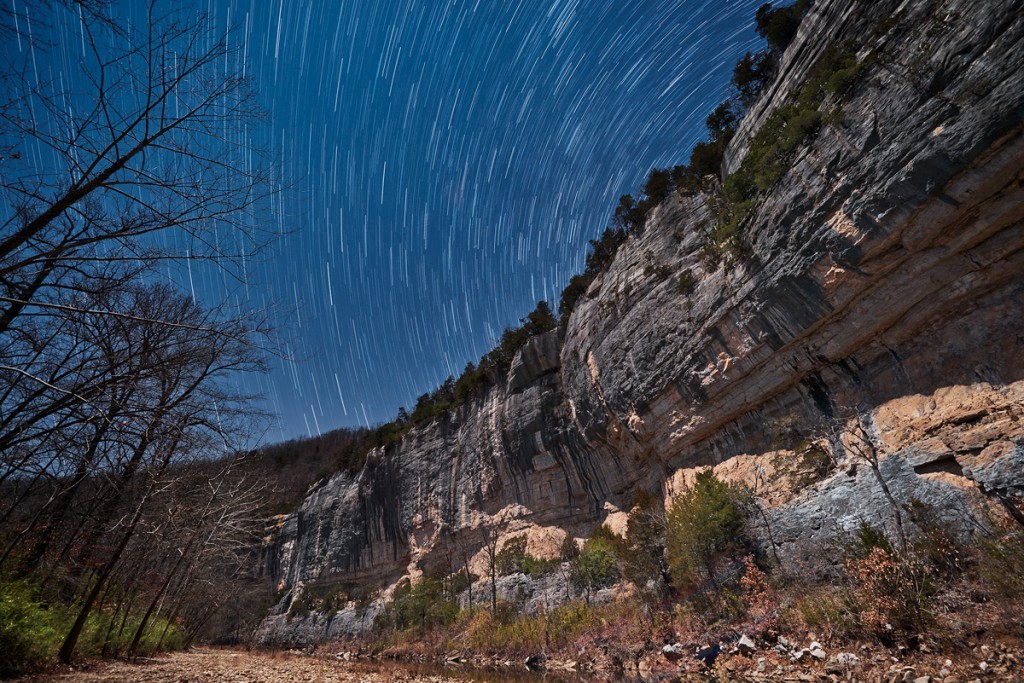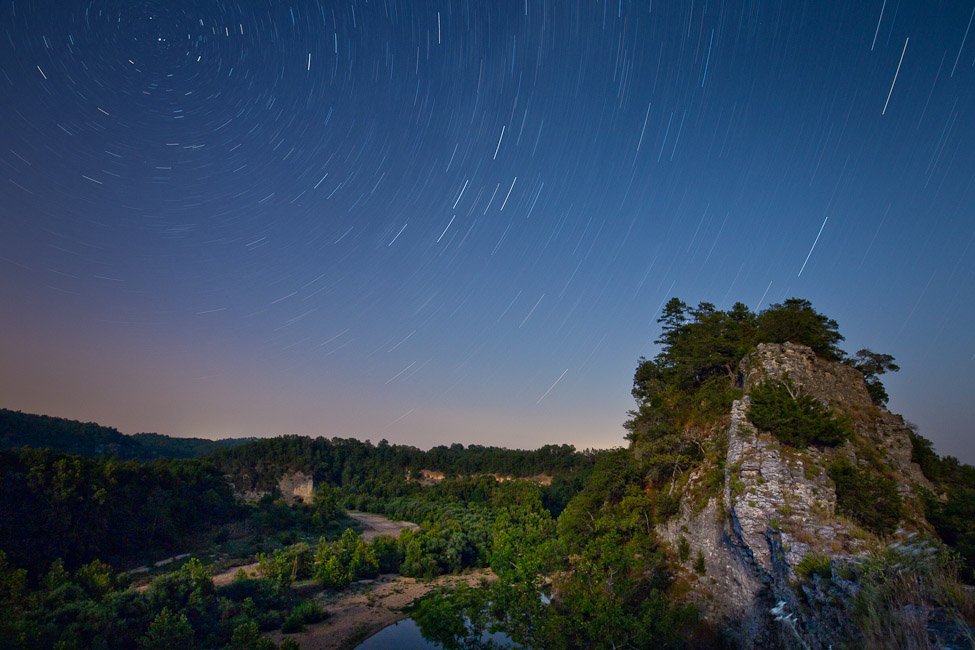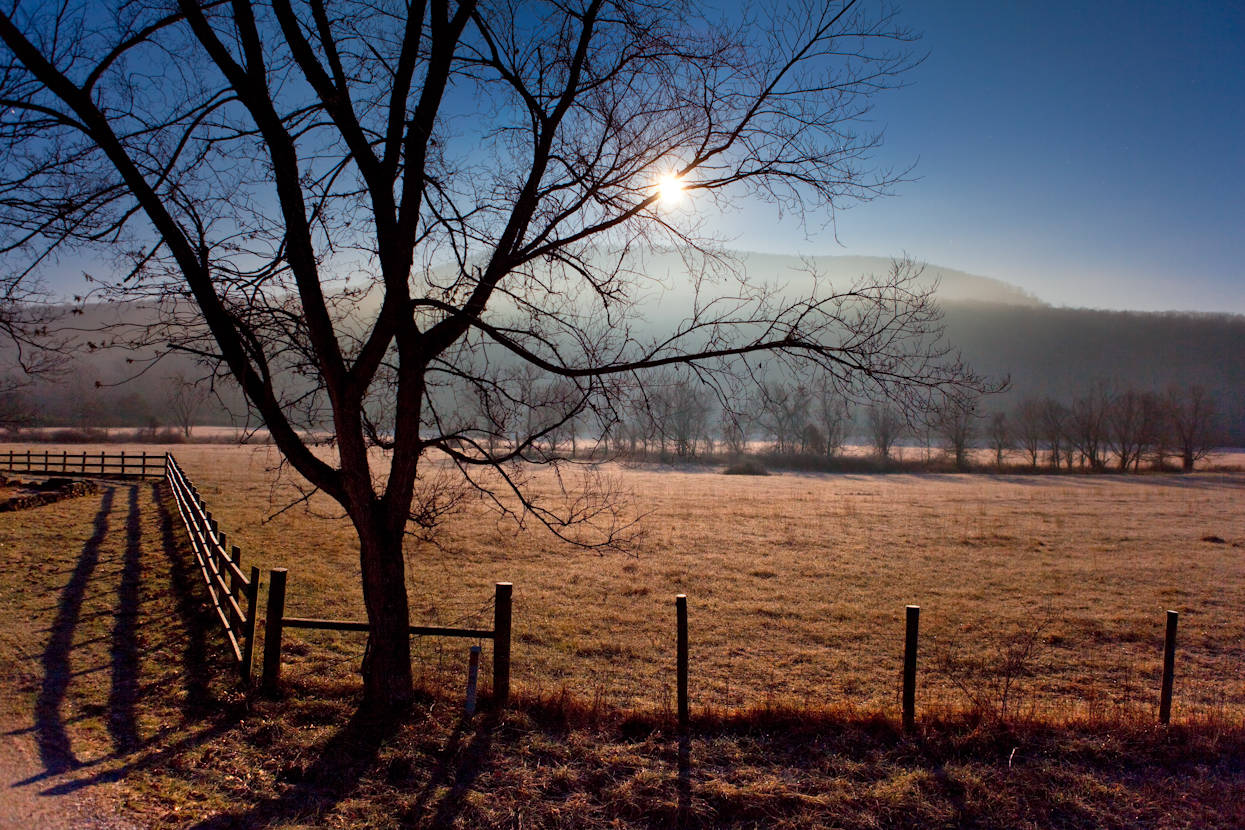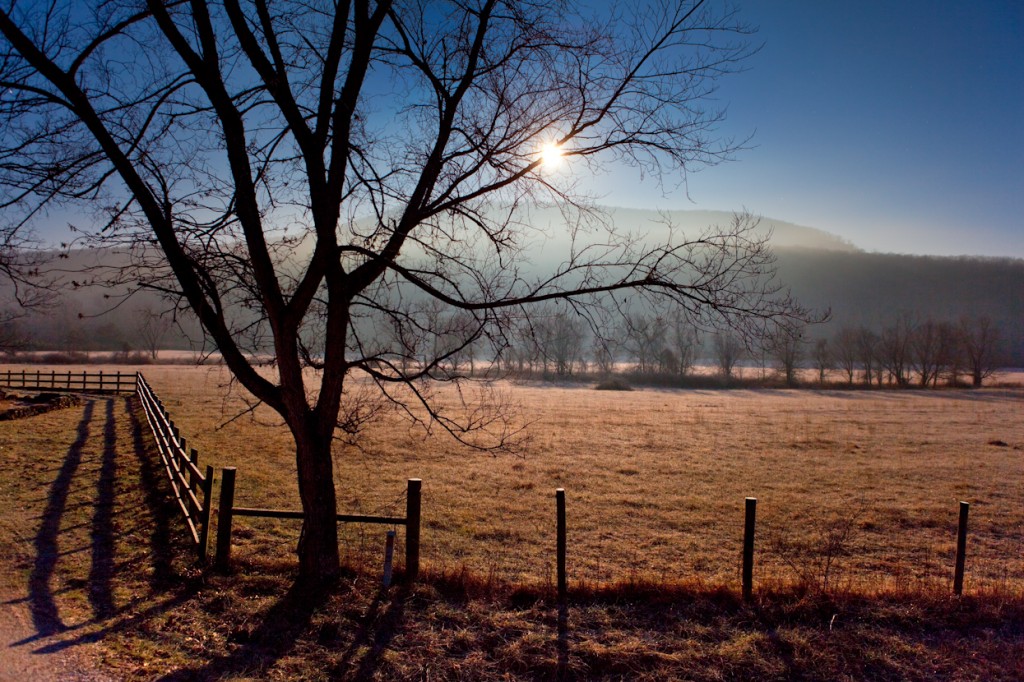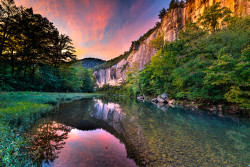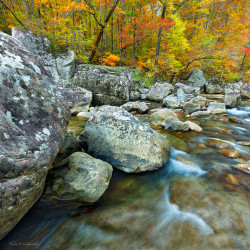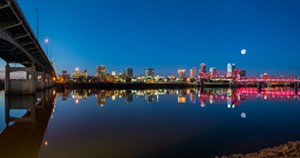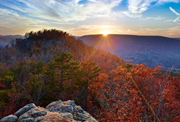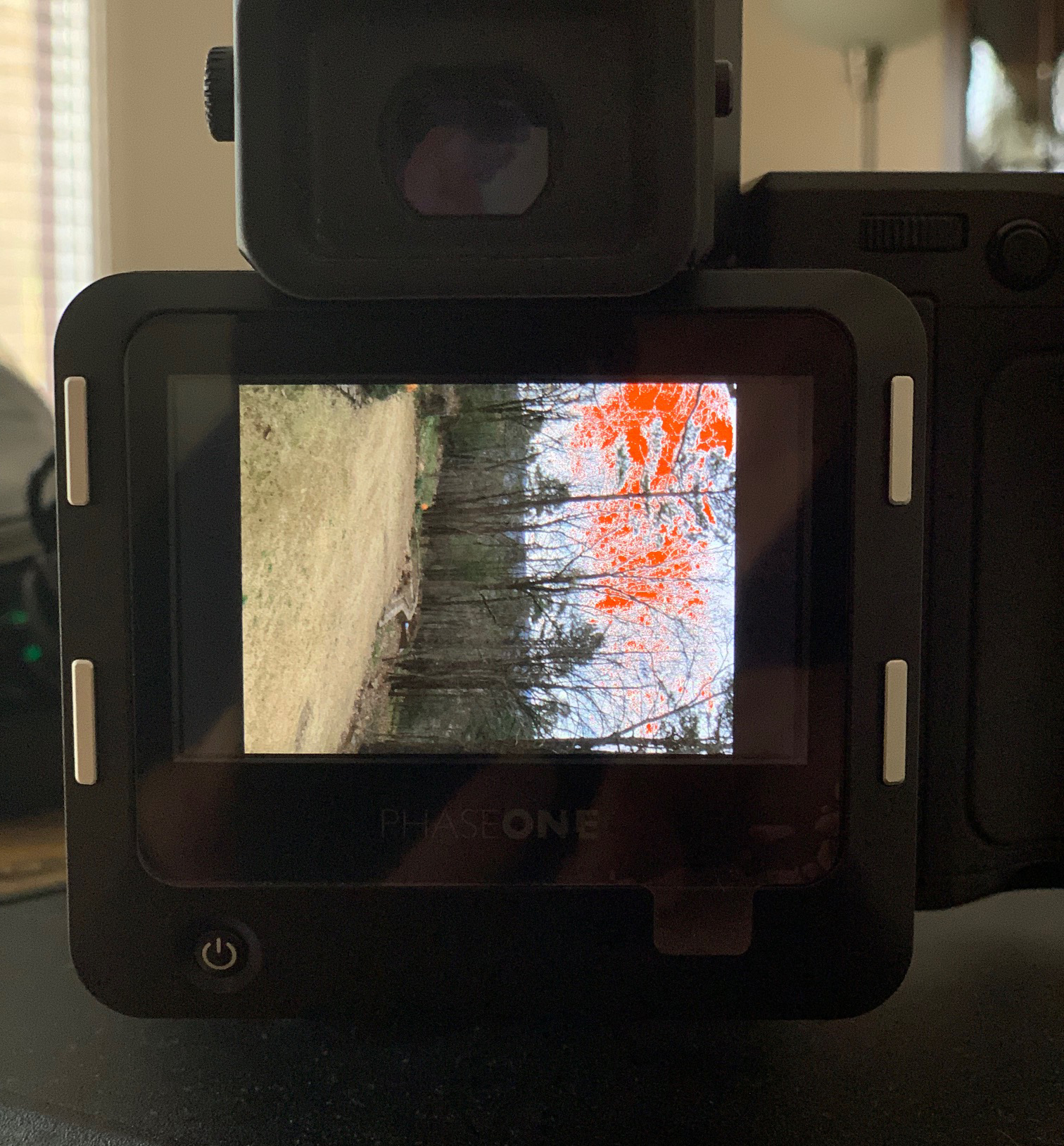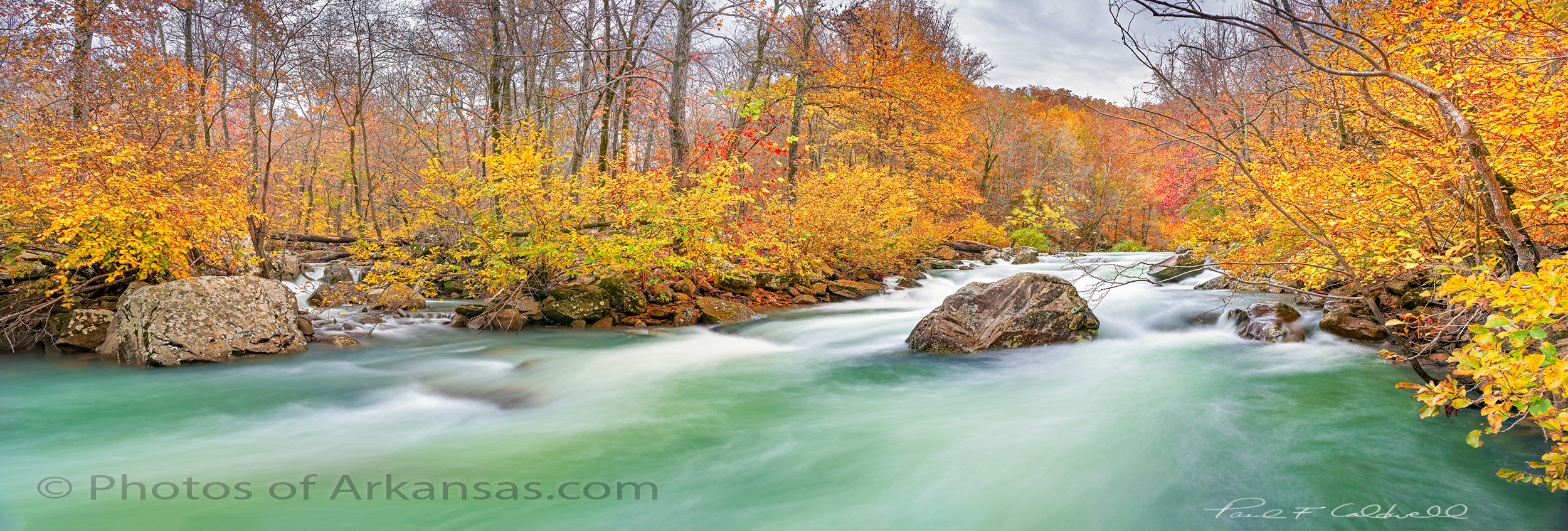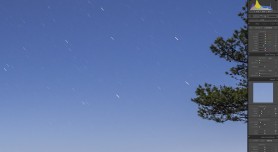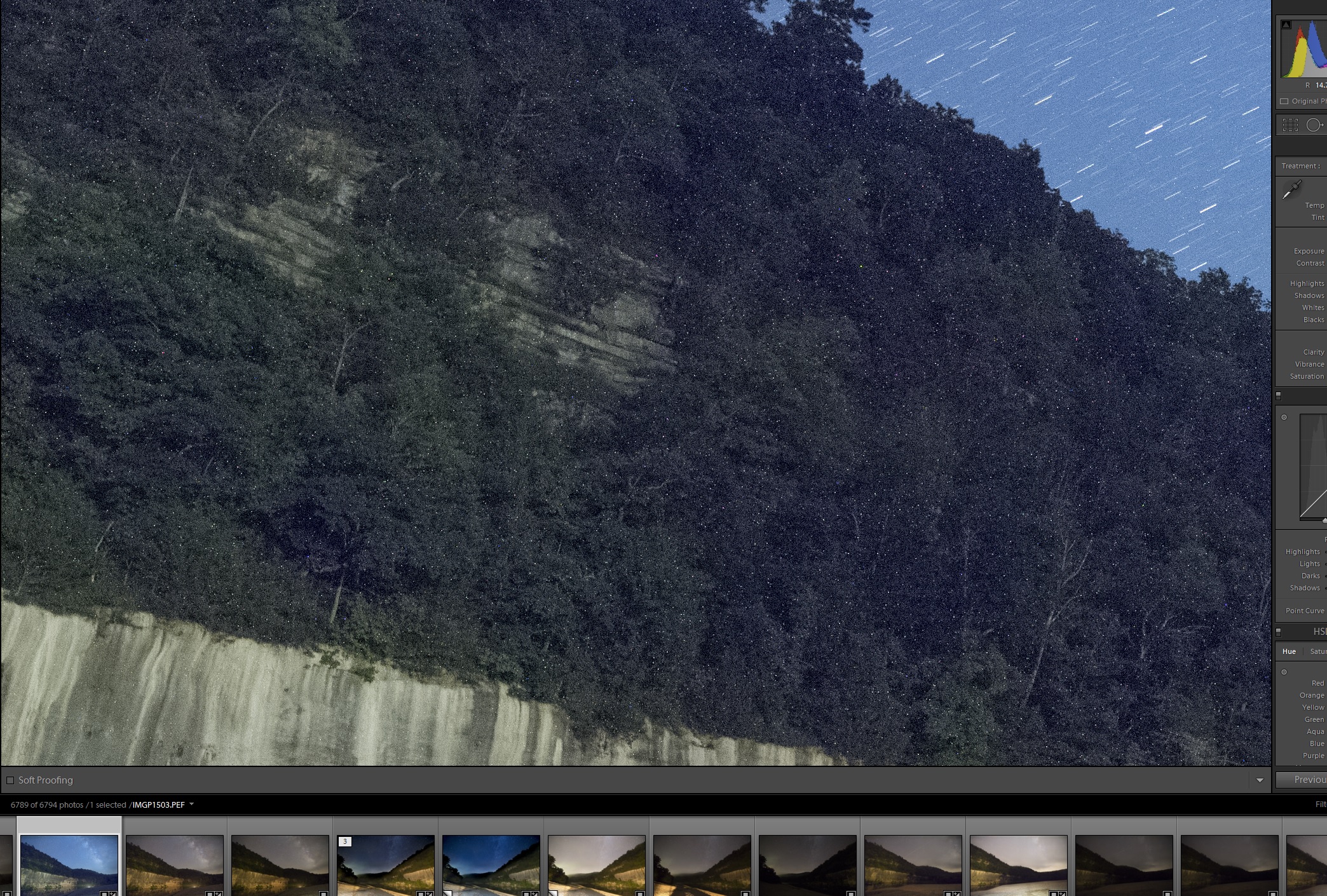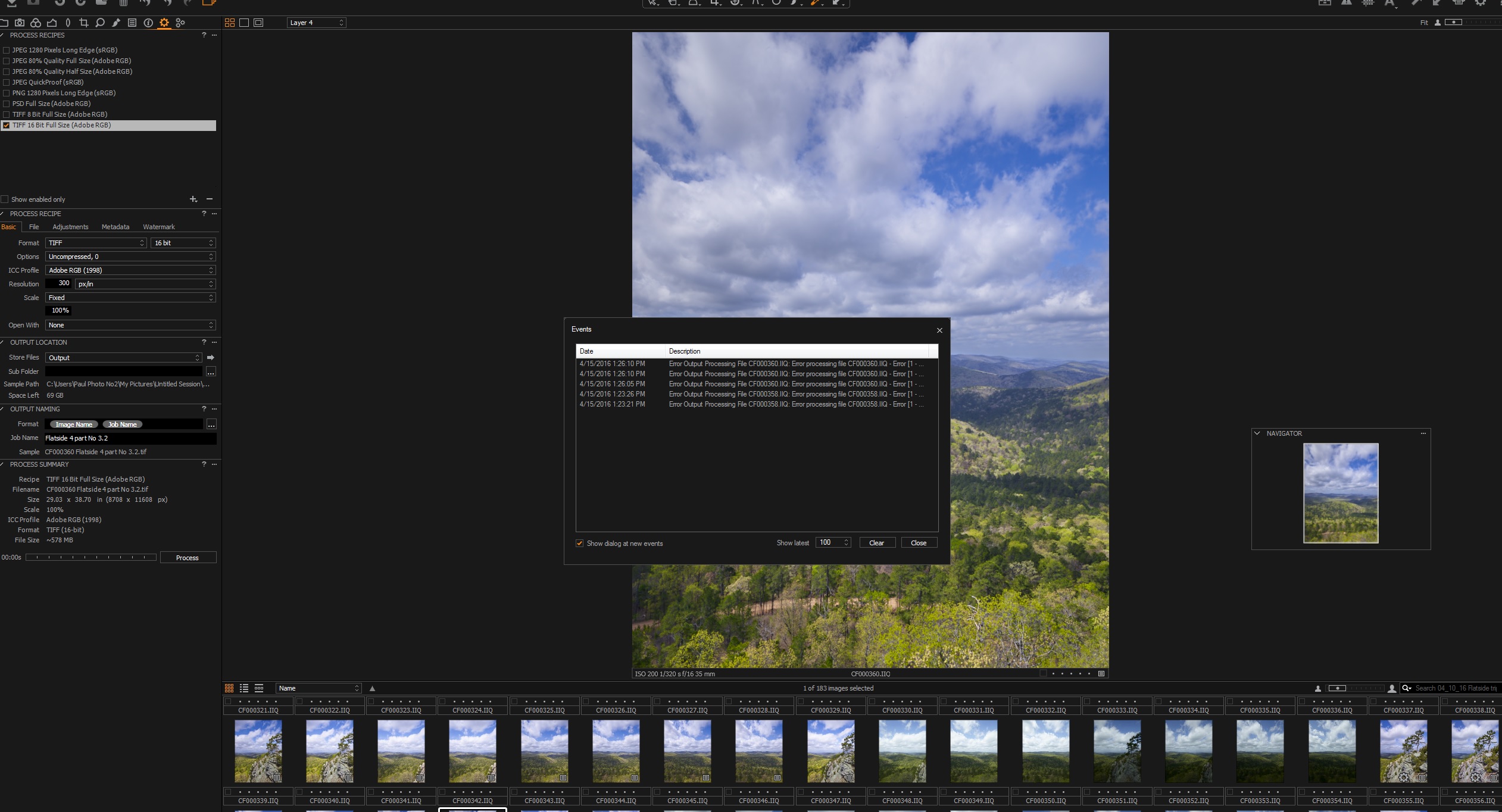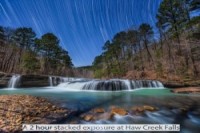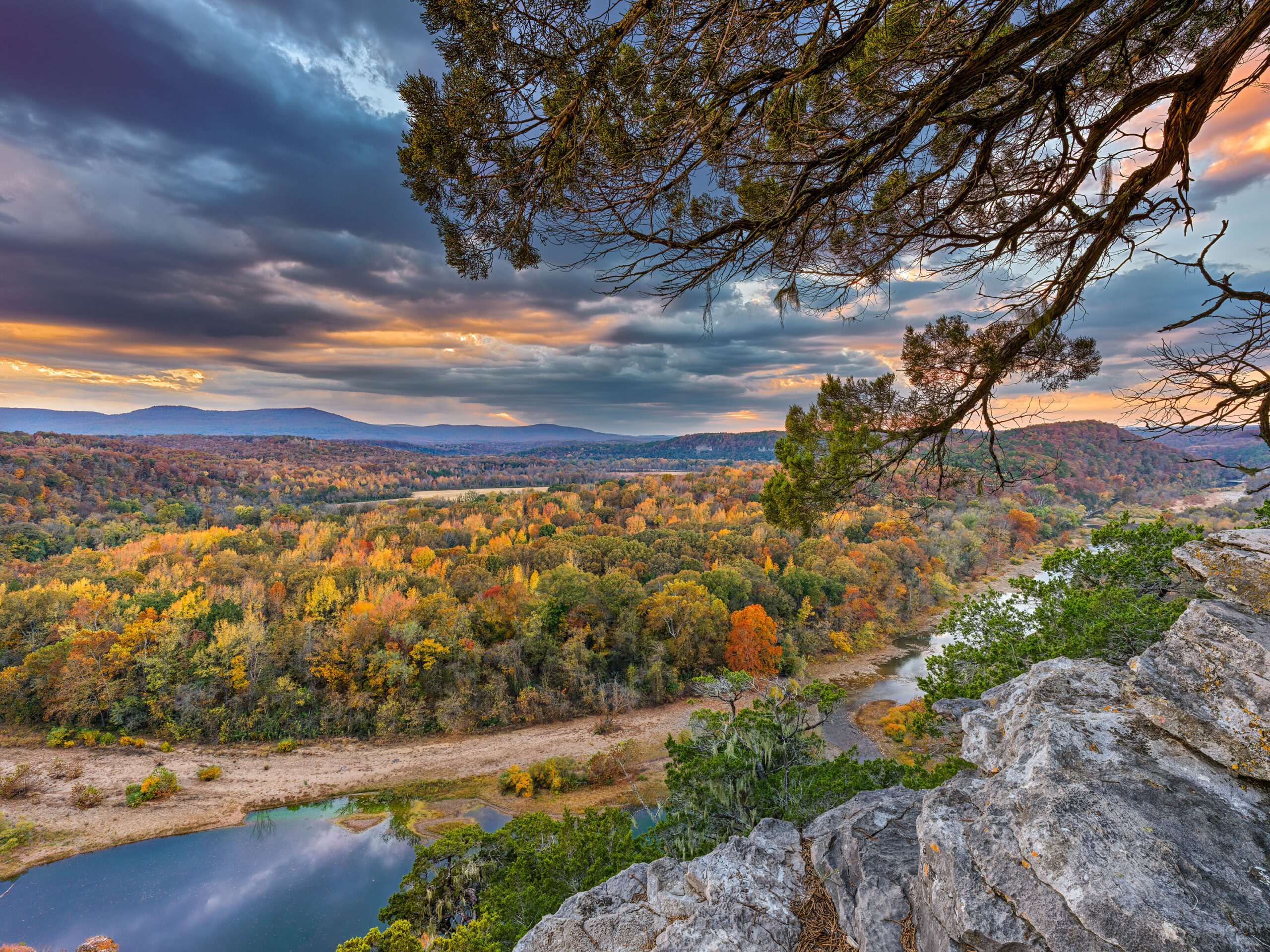10/14/14 Featured Arkansas Landscape Photography–Sunset at Roark Bluff on the Buffalo River
Taken with a Canon 5D MKII, Canon 14mm F 2.8 lens, in a bracketed series of exposures @ iso 200 This one is a special shot as it was one of those photographs that was just pure luck. I was up on the Buffalo River with Bob Shull, mainly to work the night skies, and we were just up on the river setting up our cameras. I had been looking downstream as the moon was starting to rise and it was in a very nice position. I had left my Canon 5D MKII setup for a upstream shot of Roark bluff for later that night. The evening skies had been cloudless, so I was not very interested in a sunset. I remember for some reason I looked around, probably due to a noise on the river, and wow, all of a sudden a bank of clouds had rolled at just the right time and they were on fire! I had to shoot the 5D MKII in a series of bracketed exposures as I knew that I would not be able to pull in the entire exposure with just one frame. This scene only lasted about 6 minutes and then the sun dropped below the bluff. My first series, missed the reflections of the sunset on the water at my feet. The river was not dead calm, but I still was able to pull in the reflection of the sunset on the water and the river rocks.
This was one of those once in a life time lucky lighting shots, that unless you happen to live on the river and can be out there everyday, just doesn’t happen very often. This was one of the last major photographs I took with the Canon, as I was in the process of transitioning to my Nikon D800, however I was much more familiar with the Canon at the time, so I shot with it.
01/24/14 Featured Arkansas Photography–Wintertime on Richland Creek featuring Shaw’s Folly Rapid
Taken in 2007 with a Canon 1ds MKII, Zork Adapter with Mamiya 35mm lens, F11, ISO 100, for 1.5 seconds. Richland creek is one of the most scenic spots in Arkansas, offering hiking, kayaking, and camping opportunities. The creek is one of the major tributaries of the Buffalo National River and has good flow most of the year. By far the best parts of the creek to hike are the upper reaches. Here you have have approximately 6 miles of creek and about 5 miles are just studded with great photographic opportunities. If you work the creek in the wintertime be aware that the water temperature will be around 41 to 45 degrees F. Dress warmly and look for safe places to cross. Richland has a strong flow throughout and it will fool you quickly on a crossing. During the winter you can often find great ice formations either in the creek or along the bank and many of the waterfalls that come along the creek will be frozen. It’s an easy place to look for a unique photographic study, just find one of the spots like the one in the photograph and setup. Richland is loaded with spots where house sized rocks have fallen off the surrounding bluffs or have been moved downstream during epic flooding. Enjoy!
09/25/13 Featured Arkansas Photography–A quick preview of things to come, Fall scene on the Buffalo River sunrise over Bee Bluff
Taken with a Canon 5D MKII, Canon 24-70 lens @ F8 24mm, iso 200, bracketed exposures for final image. The Buffalo River has to hold some of the best photographic opportunities in Arkansas, especially in the fall. This shot was taken in 2011 but it’s a great example of what you can expect on the Buffalo. Here you will find almost every tree species that the state has and each one will have a unique fall color, along with the short leaf pines. In this shot you can see a row of sweet gums and maples along the lower part of the bluff and in the background on Bee bluff the oak and hickory trees are making their presence noted also. Fall in Arkansas can be glorious and on the Buffalo tends to peak sometime around mid October. I feel that this year since we have had such a long dry spell that the colors may not be as bold as normal and fall may come a bit earlier than normal. So far no major storms are forecast for Arkansas this fall and the northwest portion of the state is very dry. I was up in this area last week and there were already a few trees starting to turn a bit early. I am hoping that this year will not be repeat of last and the year before where each tree species seemed to turn by itself and there was never a great display of fall color. I was lucky in this shot to catch the last of the morning fog lifting off the ground and still showing up in the maples and gums. I took this shot as a bracketed exposure since I wanted to be able to catch all the light in the sky and not have too much noise in the trees along the bluff.
03/15/13 Featured Arkansas Photography–Night skies over Roark Bluff on the Buffalo River
- At March 15, 2013
- By paul
- In Featured Arkansas Photography
 0
0
Taken with a Nikon D800e, Nikon 14-24 Lens @ 14mm, F4.5, iso 400, total exposure time approximately 40 minutes. This shot was taken back in January, but it was a great night to be out shooting the stars. The temperature was around 29 degrees and there was virtually no wind. We started shooting at dark and by about 1 hour into the night we were getting excellent runs. This shot is a composite of 40 minutes taken in 2 1/2 minute exposures at iso 400. I will then stack the exposures to catch the motion and create the trails. The blue sky is due to the moon. If you work with the moon at night you will be pleasantly surprised by the results. It will give a nice blue hue to the sky and also provide all the illumination to the bluff that you see in this photograph. This is not a daylight/nighttime exposure as many people think. This is all done at night with the aid of the moon. As was looking up, it makes the perspective of the trees a bit more interesting, as if they are looking into the photo. I am going to start working at night with a Canon 24mm TS-E for perspective control where it will give me a good enough FOV, which on this shot I needed all of the 14mm I could get. You are looking to feature the sky, but you still want to get as much of the foreground as possible.
The Buffalo National River turns 40 years old
- At August 30, 2012
- By paul
- In Buffalo at 40
 0
0
The magic and wonder of the Buffalo River has always kept me going over the years. I love to hike, photograph, and float the Buffalo throughout the year. It is an wonderful area to spend some time. However 2012 is very special as it’s the 40th anniversary of the Buffalo National River.
The year was 1972 and after long drawn out court battles in both Arkansas and Federal courts, the Buffalo River region was put aside as a National River. This was the first of it’s kind in the United State. The plan as it was laid out, would take the river and 1 mile of land on each side of the river to create a natural corridor. This Corridor would keep out any dams, commercial developments, and other man made intrusions. The river would be allowed to stay in it’s own state and continue to flow as it had for thousands of years.
The initial response was pro and con. Many families that had lived along the river for hundreds of years were forced to move off their land. Businesses were closed and everything man made was moved off the land within the boundaries. I can remember hiking down the road to Big Buff back in the mid 1980’s and still seeing a few hold outs that were living on their land. The National Park Service did allow some people to stay on their lands until their death, but then the land was reverted to the national river. Now, looking back 40 years later, it’s hard to tell in many places that anyone ever lived on the land. Fields that were cultivated for years have vanished and have been replaced with stand of new timber.
The Buffalo River is approximately 160 miles long with it’s head waters located in northwestern Newton Count. The river empties into the White River at Buffalo City. Throughout it’s length are scenic wonders that still catch my breath after all these years. You can find limestone bluffs as tall as 500 feet and waterfalls over 200 feel tall. There are hundreds of small hollows each with a unique look and feel. Over the past 30 years several wilderness areas have also been added along the Buffalo. I have special places that I find that I return to time and again, to hike and photograph throughout the four seasons.
I first came to the Buffalo region near Ponca with my parents in 1973, one year after the river had been made into a national river. Since then I have made over 400 trips over the years to the Buffalo and it’s surrounding hills and valleys. I have learned a lot about the history of the area and some of the families that started to make a living there back in the 1830’s. Taking photographs of the Buffalo region has been a passion of mine since 1976. I have traveled the length of the river twice and hope to do it again some time in the near future.
With this exhibit I am sharing some of my visions of the Buffalo region from trips I have made over th past 5 years. Many of these photographs are not of the buffalo River itself but instead are special spots that were also saved by the national river act in 1972. Please take a few minutes to look over these images and enjoy looking at at a part of Arkansas that is very dear to me. These images will be on display in framed prints and canvas at Cantrell Gallery, in Little Rock Arkansas.
07/05/12 Featured Arkansas Photography–Night skies over the Narrows on the Buffalo River
- At July 05, 2012
- By paul
- In Featured Arkansas Photography
 0
0
Taken with a Canon 5D MKII, Canon 14mm lens, iso 250, F 5.3, for 35 minutes. Not the easiest place to get to now, due to the flooding that occurred in 2010. The Narrows is a unique part of geography in Arkansas. On one side you have the Buffalo River and off in the distance, Richland Creek. Richland runs into the Buffalo not far from here, but way back hundreds or thousands of years ago, Richland ran right up along the other side of the Narrows and the two streams almost met!. The ledge is only about 2 feet wide in places and it’s quite place to walk. The view downstream featured Skull bluff and then around the bend is Woolum Ford. Be careful if you try to get to the narrows or “nars” as the locals call it by crossing the Buffalo at Woolum ford. The actual ford has changed quite a bit over the past few years and is deeper and a bit tricky at most water levels. Due to the excessive drought Arkansas has going right now, it may dry. Once you cross the ford be VERY CAREFUL IN THE SAND. This is great place to get stuck!. The best way is to use 4 wheel drive and go straight up the hillside and cut across the field, don’t try to stay in the ruts as they are now full of sand and very tricky. Even with four wheel drive.
Read More»07/01/12 Featured Arkansas Photography–Moonset over the Boxley Valley on the Buffalo National River
- At July 01, 2012
- By paul
- In Featured Arkansas Photography
 0
0
Taken with a Canon 5D MKII, 45 second exposure, Iso 100, Canon 24-70 Lens @ F6.3, Single Exposure. With modern Digital Cameras, it is amazing just how long you and work with a single exposure. I was on my way to photograph Elk in the Boxley valley and as I came around the corner on Hwy21, I saw moon was setting over this field. The temperature around 10 degrees that morning, much cooler than right now! I knew I had to work fast as the once the moon starts to set, it seems to move very fast so I rushed to set up all my gear. I took this shot on a tripod at around 45 seconds. I was amazed that I didn’t get too much movement with the moon as it was setting. I used the tree in the foreground to help block out the center of the moon but it still came out pretty bright. The sky is a blue color which is normal when you work with the moon. If you look closely you can see the moonlight reflecting off of bits of ice on the ground. The amount of light that was available can be seen by the shadows along the fence row.

